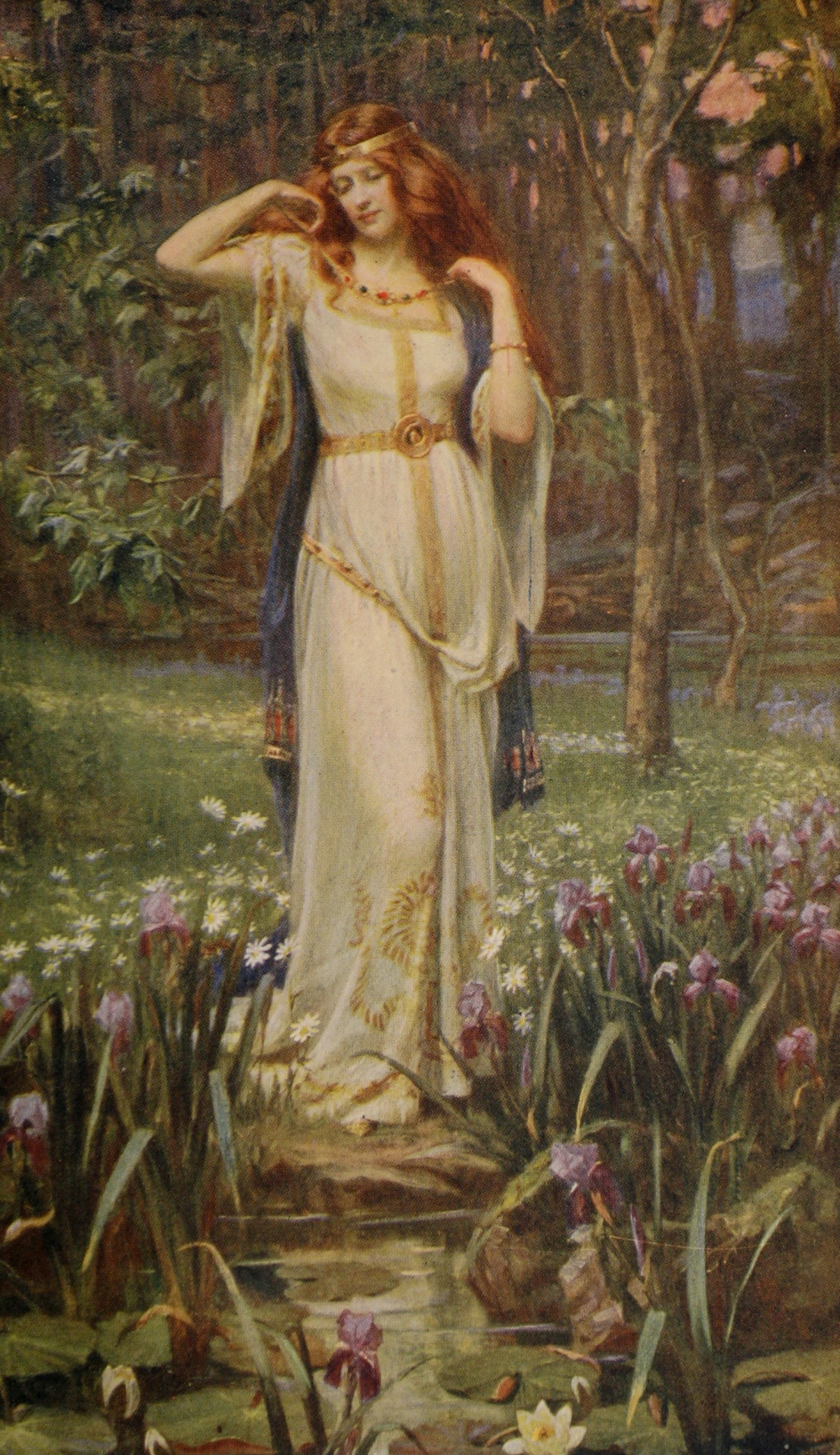 |
| Freya and the Necklace James Doyle Penrose (Public Domain) |
Fréo of the cat-drawn chariot,
Fréo of the falcon cloak,
Fréo of the passions of all men:
with your vitality, with your passion, with your magic,
come and bless me and mine.
Fréo of the amber and gold,
Fréo of the soveriegn land,
Fréo of the boundless seidh:
with your vitality, with your passion, with your magic,
come and bless me and mine.
Fréo, strength of women,
Fréo, golden beauty,
Fréo, fierce in battle:
with your vitality, with your passion, with your magic,
come and bless me and mine.
- prayer to Fréo
modified from Kimberly Remen's prayer to Freyja
Fréo is an Anglo-Saxon Goddess, experienced by many Anglo-Saxon Pagans, though not obviously attested - though one reason for this may be the similarity between Her name and Frige's, making it difficult to discern who place-names are referencing. I experience the AS deities as separate, though similar to Their Germanic counterparts; Fréo is linguistically related to the Goddess Freya, of whom we have many reports.
She is a member of the tribe of the Vanir (the Wanes in Anglo-Saxon), a tribe of deities closely associated with nature and the earth. Talking for a moment about Freya, there are many stories describing Her skill at magic (particularly seiðr), Her multiple sexual partners, Her warrior associations, and Her sovereignty. Many see Her as originally being a sovereignty Goddess, granting Odin His power over the land through sexual relations - this is corroborated by the Sörla þáttr, in which not only is Freya described as a 'concubine' of Odin, but He becomes extremely jealous when He discovers She has given Her sexual favors to others. Whatever Her function originally, it is clear in the many other stories of Her that She has become much more. In Gylfaginning, it is said that "whenever She rides into battle She takes half of the slain," clearly marking Her as also a warrior Goddess. She is also said to have taught seiðr magic to Odin - whether seiðr is Her own power or knowledge common among the Vanir, we do not know. She is also portrayed as sorrowful; Her husband Óðr is frequently gone, and She is described as weeping tears of red gold for Him. Her associations with fertility and the Earth are obvious. It is speculated that many plants now named after Saint Mary in Northern Europe were originally named after Freya.
It is my impression that Fréo is a Goddess of the land, but not as much so as Her mother or Her brother, Ing Fréa. She is associated with those parts of our lives that are still very much tied to our animal instincts: sexuality, hunger, etc. And yet She also calls us to the mystery that lies behind these seemingly simple pleasures, the mystical experience of otherworldly trance and magic that stems from that which is green and growing.
No comments:
Post a Comment